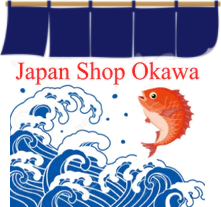🍣 Sushi Etiquette & Menu Guide for tourist
1. Essential Sushi Manners
Sushi is an art form, and following a few simple rules enhances the experience for both you and the chef (Itamae).
| Aspect | Etiquette Rule | Explanation |
| Using Soy Sauce (Shoyu) | Dip the Neta (Topping), not the Shari (Rice). | Dipping the rice causes it to absorb too much soy sauce, making the flavor overpowering and the shari fall apart. Dip fish-side down. |
| Hands vs. Chopsticks | Both are acceptable. | It is perfectly fine (and traditionally correct) to eat nigiri sushi with your fingers. Use chopsticks for sashimi or gunkan (battleship rolls). |
| Eating Nigiri | Eat it in one bite (Ideally). | Nigiri is generally designed to be eaten in one piece so you can experience the balance of fish, rice, and wasabi all at once. |
| Wasabi | Do not mix it into the soy sauce. | The chef has already adjusted the amount of wasabi inside the sushi. If you want more, dab a small amount directly onto the fish. |
Ginger (Gari) |
Eat it between different types of fish. | Gari is used as a palate cleanser. It is not meant to be eaten with the sushi. |
| Ordering | Start with lighter fish, end with heavier/fatty fish. | A typical order is: White fish (sea bream) $\rightarrow$ Red fish (tuna) $\rightarrow$ Fatty fish (o-toro) $\rightarrow$ Rolls $\rightarrow$ Sweet egg (tamago). |
2. Confusing Sushi Toppings (Neta)
Many foreign tourists get confused by the names or nature of these common Japanese toppings.
| Japanese Name | English Description | Key Difference/Tip for Tourists |
Maguro (マグロ) |
Tuna | This is the general term. It comes in different cuts based on fat level: Akami (lean), Chutoro (medium fatty), and Otoro (most fatty/expensive). |
|
Hamachi (ハマチ) |
Yellowtail | Often confused with Buri. Hamachi refers to the younger fish, while Buri (鰤) is the same fish but mature. Both are delicious, firm white fish. |
|
Ikura (いくら)
|
Salmon Roe | These are large, bright orange eggs that burst in your mouth. They are usually served on gunkan (rice wrapped with seaweed). |
Uni (うに) |
Sea Urchin | A unique, buttery, and intense seafood delicacy. It has a distinctive savory and slightly sweet flavor. Highly prized in Japan. |
Anago (穴子) |
Saltwater Eel | Served cooked (simmered and brushed with sweet sauce). Often confused with Unagi (freshwater eel), which is also served cooked, but Anago is lighter and less fatty. |
Ika (Squid) /  Octopus Octopus |
Squid / Octopus | Ika (Squid) is usually translucent and served raw, known for its firm, slightly sticky texture. Tako (Octopus) is always boiled and has a chewy texture. |
|
Tamago (玉子) |
Sweet Egg Omelet | This is a thick, slightly sweet omelet, often served at the end of the meal as a dessert or palate cleanser. |
=======================================================================
You can see the title list of our blog here.
https://japan-shop-okawa.com/pages/blog-list
=================================================================
For travellers to Japan
We sell and deliver Japanese products to your hotel or airport while you stay in Japan.
More detail → Delivery service to Hotel

We sell and ship Japanese products from Japan to your address overseas.
More detail →Sell and ship overseas

====================================================================




